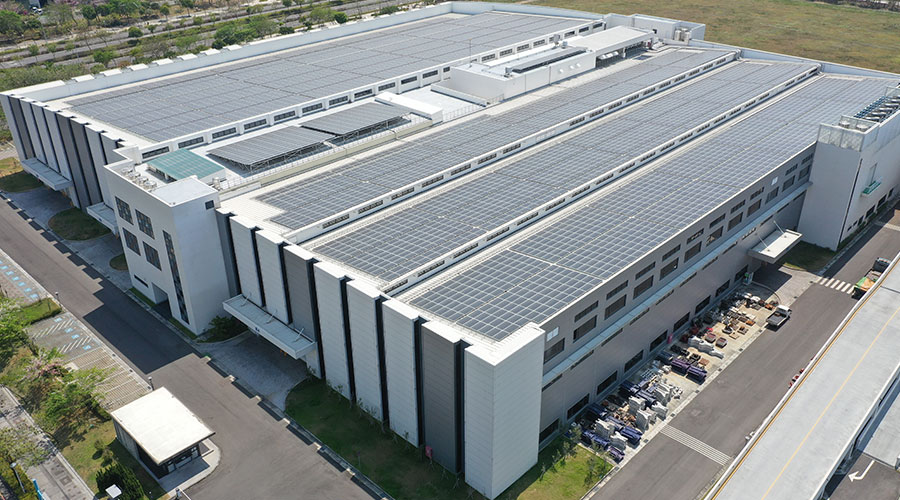Ensuring Power Stability and Efficiency with Battery Energy Storage Systems
Battery energy storage systems bring power stability and cost efficiency to facilities
Mission-critical facilities such as hospitals and data centers need a constant source of 100 percent reliable energy to run and power their equipment. Battery energy storage systems (BESS) ensure power redundancy and stockpile renewable energy for use during peak demand periods when utility costs are higher, and grid reliability is more vulnerable.
As solar and wind power generation capacity expands across the United States, the demand for BESS continues to grow at an unprecedented rate. According to the U.S. Energy Information Administration, battery energy storage capacities were expected to double in 2024, with 14.3 gigawatts (GW) of new storage projects added to the existing 15.5 GW network.
This rapid growth trend builds on a nearly 70 percent annual increase in BESS capacity during 2023 when 6.4 GW of new battery storage was added to the U.S. power grid. For perspective, the average annual electricity consumption in the U.S. was around 438 GW in 2020.
Demand continues to grow
BESS technologies are critical to our nation's electrification goals, grid reliability and energy independence, says Patrick Hughes, senior vice president of Strategy, Technical, and Industry Affairs for the National Electrical Manufacturers Association (NEMA).
“Energy storage is rapidly growing in importance, with U.S. electricity demand projected to increase by more than 50 percent by 2050,” he says. According to the association’s forthcoming Grid Reliability Study, BESS market growth is fueled by expansions in data centers, electric vehicles, commercial and industrial building resilience and demand management, utility-scale grid stabilization and integration of renewable energy generation.
Last year, NEMA introduced a BESS performance measurement standard to help users evaluate and select the correct storage systems.
A study from McKinsey & Company describes three segments in BESS configurations: front-of-the-meter (FTM) utility-scale installations — the largest segment — which are typically greater than 10 megawatt-hours (MWh); behind-the-meter (BTM) commercial and industrial installations, which usually range from 30 kilowatt-hours (kWh) to 10 MWh; and BTM residential installations, which are generally less than 30 kWh.
Most facility managers and building operators manage behind-the-meter battery storage systems, says Robert Anderson, senior vice president of Energy Advisory Services for JLL.
“The growing application for BESS and other microgrid technologies has evolved and expanded the role of facility managers to include supply side/behind-the-meter technologies — and how they interact with the grid,” Anderson says. “Facility managers and building engineers have always been the front line of defense when it comes to effectively managing energy at the point of use. A core aspect of their role is looking for opportunities to increase energy efficiency while maintaining operational continuity and security.”
One of the most attractive benefits of energy storage technology for commercial building owners and facility managers is energy arbitrage, which involves shifting electrical consumption to off-peak hours. The stored energy may be sold back to utilities or used when there is no access to grid power.
“BESS technology can help regulate supply and demand by amassing power when needs are low and utility power is cheaper, and utilizing that energy when power needs are high, and power is more expensive,” says Graham McLeod, principal of AlfaTech.
Renewables alone are not always the answer, thus a need for an energy alternative.
“Wind and solar power renewables often cannot provide adequate power during peak-demand periods and, even more often, provide excess power during low-demand periods,” says colleague Michael Fluegeman, PE, senior principal of AlfaTech.
In California, for instance, during peak solar production hours (10 a.m. to 1 p.m.) in 2023, battery charging accounted for approximately 8.3 percent of the California Independent System Operator (CAISO) balancing area’s load. This indicates a significant use of BESS for absorbing excess solar energy during low-demand periods, which can then be discharged during peak-demand times.
In addition to this type of peak-shaving — when a facility supplements its grid energy use with another source such as batteries — BESS can lower energy costs, according to David Borchardt, P.E., senior mechanical engineer, for MD Energy Advisors.
“In many energy markets, the utilities charge for energy at different rates depending on the time of day due to the demand on the grid,” Borchardt says. “Moreover, utilities measure energy usage to help them determine the rate they will charge each customer in the coming year based on their peak demand. Batteries help customers reduce their demand from the grid during these peak times when the energy grid is strained.”
Joel Williams is a freelance writer based in Frankfort, Illinois.
Related Topics:












